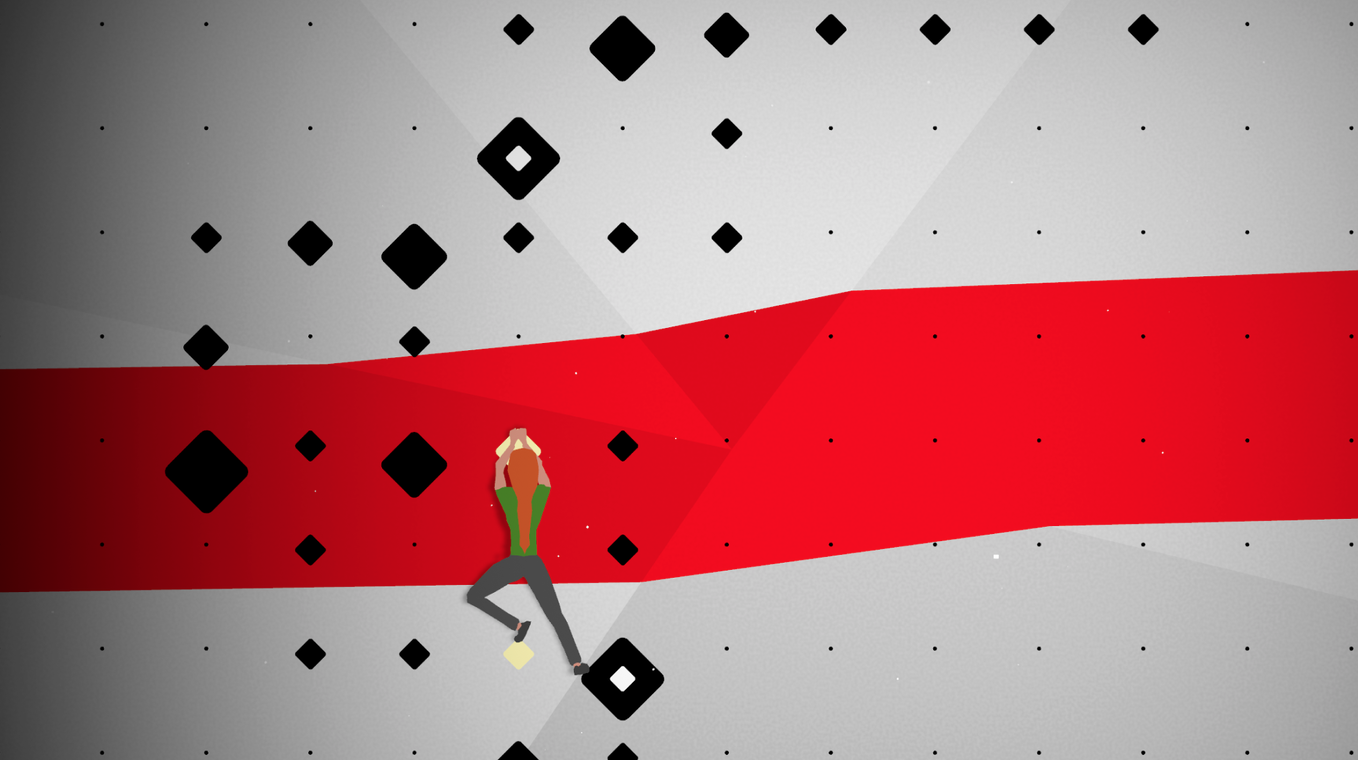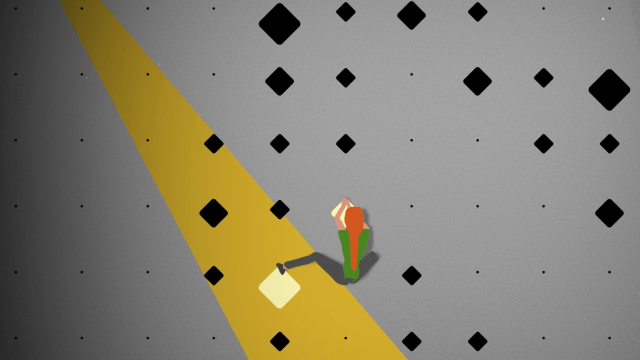My climbing gym reopened recently, but thanks to the coronavirus, for the first time in my rock climbing life I’m not in a rush to spend every available second there. New mobile game Crux almost scratches my climbing itch: the climbing gym simulator gives me the problem-solving fun of rock climbing, but without the sore arms and shirtless bros of the gym.
Crux is a free iOS and Android game by one-person Swedish developer MindGames. You guide a character through various bouldering problems. (“Bouldering” is the kind of climbing that’s close enough to the ground to do without a rope; “problem” is the charming climbing word for a route. A “crux,” incidentally, is a part of a route that’s particularly hard.) You climb by swiping different sides of the screen to move your hands and feet. After the tutorial, the game is broken up into chunks depending on the “grade” of the problems, or how hard they are, which you unlock through points you earn by climbing. I’m currently in Crux’s first set of problems, which range from v2 to v5 on climbing’s “V scale” difficulty level. In real life, after almost a year of climbing two or three times a week, I was working on v3s and 4s before the pandemic struck, so it’s cool to climb virtual problems that feel about my actual level, as well as exciting to try some problems that are beyond my current ability. There’s also a level editor where you can create your own routes.
Once you get out of the tutorial, every handhold has a time limit, with smaller holds having shorter time windows. If you don’t move fast enough you’ll fall and have to start again, though longer routes have save points. You need to move your hands and feet in a careful order to avoid running out of time on a hold, and longer problems involve memorising and then executing that order with precision.You can examine the route and plan your strategy before you climb, and you can also turn on a practice mode that lets you climb without the timer.
I sometimes got frustrated with Crux’s timing element. Your character obviously doesn’t move quite as flexibly or creatively as a real-life climber, which often tripped me up; I’d forget I had to move both my character’s legs and find myself swiping ineffectively at the screen while the timer ticked away. The hold you’re stuck on will flash helpfully to pinpoint where you’ve gone wrong, but I’d often get tangled up without enough time to correct things. I do far better in Crux when I check out the route before I start and when I practice my moves until I have their order down, turning practice mode on and off until I can execute tricky sections through the right order of hand and foot swipes. In real life, I am terrible at planning my climbs: I tend to give routes the most cursory read before I jump on the wall and try to figure things out as I go. It was revelatory to realise this tendency was holding me back in Crux, just like it does in real life.
Crux is an interesting game to play as a real-life climber. Reducing climbing to moving your arms and legs in order simplifies the sport into an approachable spatial puzzle, but necessarily loses a lot of the moveset that makes it so mentally and physically challenging. The game’s different-sized handholds just mean having different time limits, when in real life different hold types require different grips, foot positions, or use of your weight. In real life, I’m a slow, cautious climber who spends more time than I should hanging out on holds, a bad beginner habit that wastes the energy I need for long routes or powerful moves. But the game’s timer forces me to plan and then execute that plan with speed and confidence. Crux asks me to climb in a way that’s very different than I do in real life. This is a good thing (seriously, I need to learn to read routes) and a difficult thing, because it feels just different enough from how I want to climb that I can get frustrated when my character can’t move how I would.

But Crux has given me an excuse to talk to you about climbing, and to think about climbing at a time when I can’t do my favourite sport. It’s no replacement for the joy of cheering on strangers at the gym, but it gives me some of the problem-solving fun of climbing without its attendant aches and pains. (Real-life climbing me was always hurt; the coronavirus’ US arrival cut short the tedious physical therapy I was doing for an overuse injury. If, for some reason, my PT is reading this: I am, uh, totally doing those exercises, really.)
Learning to climb was an incredibly important part of my sobriety; pre-pandemic, my favourite Friday night activity was to stay at the gym until midnight and then walk home past all the bars I used to frequent, sweaty and spent and feeling grateful for how radically I’d changed my life. I miss it terribly, but it doesn’t feel safe to go back to my gym, or right to ask the gym’s staff to put themselves at risk so I can do my hobby, however important that hobby is to me. Crux gives me some of the mental joys of climbing, if not the physical and social joy of doing it myself. In these shitty times, that’s a pretty great thing.

Leave a Reply